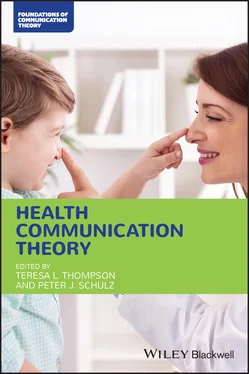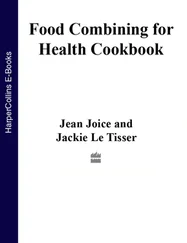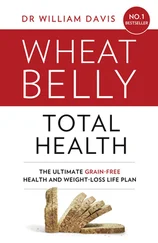(pp. 59–60)
As a small illustrative sample, evocative accounts of health and illness have offered important insights into negotiating the social effects of life with chronic pain (Birk 2013); navigating patriarchal healthcare while living with invisible illness (Edley and Battaglia 2016) or giving birth (Ohs 2020); managing emotions outside of an eating disorder (Tillmann 2009); adjusting to new normals after a difficult diagnosis (Baglia 2019) or permanent disability (Kellett 2017; Smith 2019); and raising cultural and political consciousness of pregnancy loss (Silverman and Baglia 2014).
The term analytic autoethnography refers to ethnographic research in which the researcher combines self‐narrative with dialogic engagement and is committed to developing theoretical understandings of broader social phenomena (Anderson 2006). The latter is what especially defines and distinguishes analytic autoethnography from Ellis and Bochner’s evocative autoethnography. Indeed, “the definitive feature of analytic autoethnography is this value‐added quality of not only truthfully rendering the social world under investigation but also transcending that world through broader generalization” (Anderson 2006, p. 388). This is a more conservative position that incorporates the researcher’s perspective within traditional elements of scholarly inquiry, leading some critics to claim analytic autoethnography is really no different than realist ethnography (see Ellis and Bochner 2006).
Anderson (2006) outlined five key features characterizing analytic autoethnography. First, the researcher is a complete member of the studied social world. Second, as a complete member conducting research, the researcher is also aware of her reciprocal influence on the social world under study (i.e. analytic reflexivity) and, third, is visible in the narrative representation of her work to demonstrate her personal engagement in that world. Fourth, the researcher grounds her autoethnography in her subjective experience but reaches beyond it as well in dialogue with other participants. Finally, to that end, the researcher is committed to analysis directed toward theoretical elaboration, refinement, and extension that transcends beyond the local data for broader understandings of social processes.
To illustrate, consider Laura Ellingson’s (2005) innovative ethnography of an interdisciplinary geriatric oncology team at a regional cancer center. A cancer survivor herself, she combined autoethnography with narrative ethnography, grounded theory, and feminist analyses to theorize backstage communication processes (e.g. formal reporting, informal information sharing, and relationship building) for improved frontstage patient care. While her layered account shared many of the characteristics of analytic autoethnography, Ellingson also embraced crystallization, embodied ways of knowing, and her talents as a narrative writer to evoke emotional responses that traditional analysis and representation usually eschew.
Like Ellingson (2009; Ellingson and Ellis 2008), some scholars call for a moderate approach to autoethnography that is both self‐focused and analytical:
What I wish to do in this article is draw attention to the middle ground, to encourage would‐be autoethnographers to consider a balanced perspective that lies between the warring factions of evocative and analytic approaches to this method, one that captures the meanings and events of one life in an ethical way but also in a way that moves collective thinking forward – a moderate autoethnography.
(Wall 2016, p. 7)
Erin Willer’s (2020) compelling autoethnography of running as an embodied practice under the load of infertility, baby loss, and motherhood provides an apt example. Willer drew from her detailed running log, which consisted of “the successes and challenges of my runs themselves, but also my memories, experiences, and sense‐making surrounding my infertility, losses, motherhood, and transitioning into being 40 years old that running conjures up” (Willer 2020, p. 3), to explore meanings born from this running‐in‐process state and to expose the sociocultural challenges that women similarly experience. Willer writes with striking sensory detail, literary artfulness, and soulful heart (i.e. evocative) while also theorizing feminist embodiments of health and unsteady spaces of freedom (i.e. analytic). In other studies, autoethnographers in health communication have combined singular personal stories with theoretical understandings of – for example – disenfranchised grief when an ex‐spouse dies (Tullis 2017), feminist perspectives on patient consent during illness (Cole 2020), revealing and concealing invisible illness (Defenbaugh 2013), and the moral process of bearing witness to suffering in the intensive care unit (Sharf 2019). Moderate autoethnographies like these “tap into legitimate and unique sources of knowledge and insight that come from a particular view of one’s place in the world” in evocative tellings that are supported by theory and connected to relevant literature (Wall 2016, p. 7).
Rhetoric of Health and Medicine
Within a university communication department, shared theoretical constructs (e.g. narrative, metaphor, ideology, hegemony) can unite methodological differences – namely, the critical‐interpretive health communication and the rhetoric of health and medicine – as scholars investigate meaning‐making in a variety of health‐related contexts (see Keranën 2015; Lynch and Zoller 2015). Rhetoric can be defined in various ways, but it generally refers to the study of persuasive discourses in any number of forms, including spoken, written, mediated, or face‐to‐face. In health communication, rhetorical criticism has been “invaluable in answering important questions about how best to communicate health information, the consequences of those messages, and how cultures come to understand and address particular health concerns” (Stokes 2014, p. 279).
Beyond and within health communication (see Lynch and Zoller 2015), rhetoric of health and medicine is a burgeoning, robust area of scholarship, spanning rhetorical studies and the medical humanities, as well as multiple communicative contexts and a wide swath of discourse domains. Indeed, “health and medical rhetoric infuses every aspect of healthcare” (Keranën 2014, p. 1173) from insurance forms, patient intake histories, and clinical notes through online support groups, digital health information, pharmaceutical advertisements, email exchanges between patients and providers, and mass‐mediated representations of illness. Scholarship in the rhetoric of health and medicine offers a humanistic perspective on the exigencies, functions, and impacts of health‐related discourse.
Stokes (2014) outlined four theoretical assumptions that – echoing the other frameworks in this chapter – demonstrate the commitment of rhetoricians as critics to keep close relationship with the discourses they critique. First, rhetoricians assume reality is constructed through language and culture is perpetuated through discourse. To that end, they are interested in both the measurable outcomes of a campaign and in the ways that campaign could shift cultural views, as demonstrated, for example, in campaign analyses of the use of humor in combating stigma about mental health in men (Mocarski and Butler 2016) and in the endorsement of personal responsibility for managing risks of infection (Brown 2019). Second, rhetoricians acknowledge that a neutral stance is both impossible and unethical, given that they bring their own ideologies and biases to bear when studying a particular phenomenon. Third, rhetoricians recognize that their perspective is selective. As such, any rhetorical act can be read in numerous ways, and audiences may take away different meanings from a particular health message. Finally, rhetoricians debate what constitutes an object of critique, noting that it could be one particular persuasive discourse or an assembly of texts and artifacts. As Lisa Keranën, an influential rhetorician of health and medicine, noted:
Читать дальше












